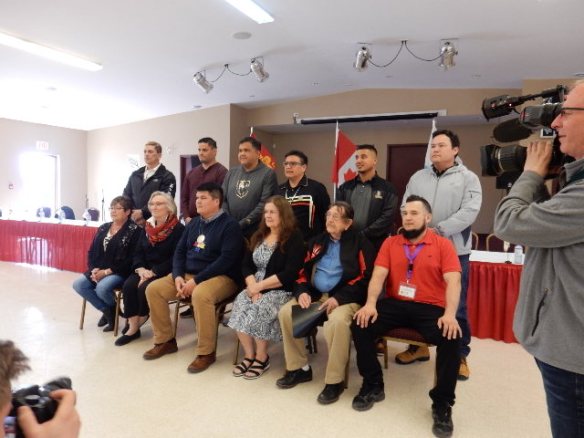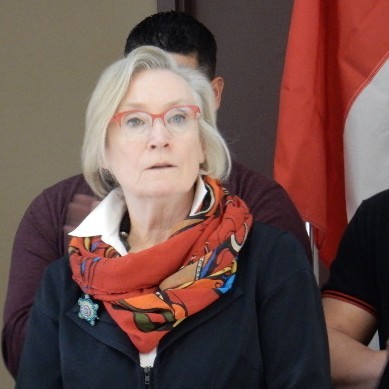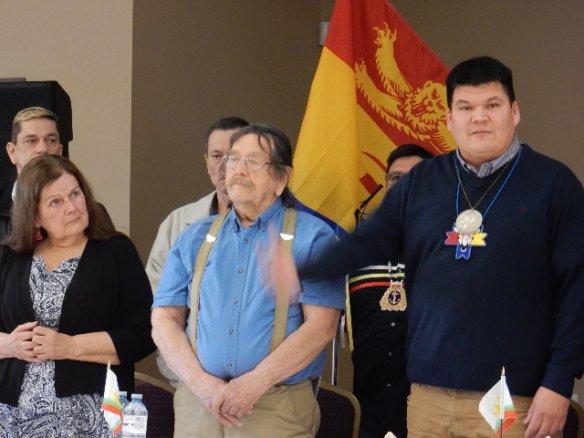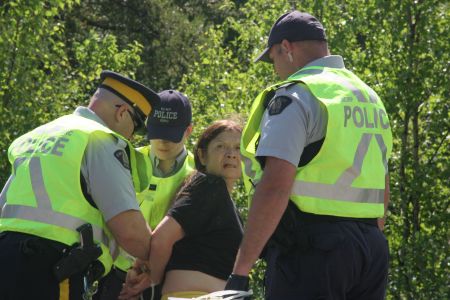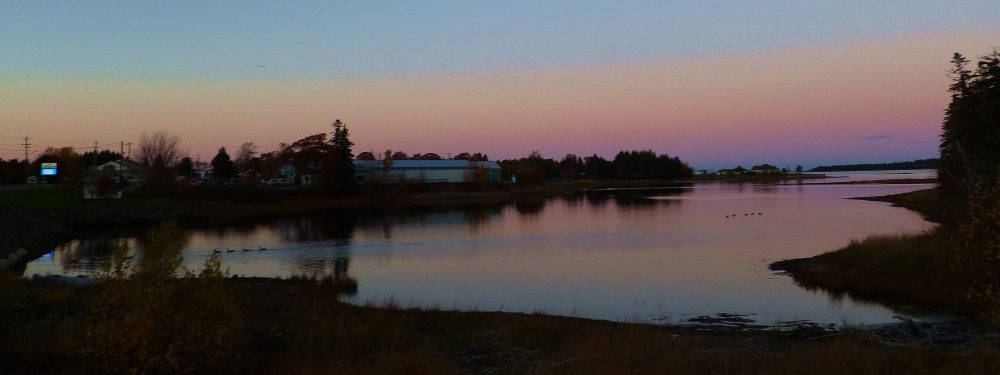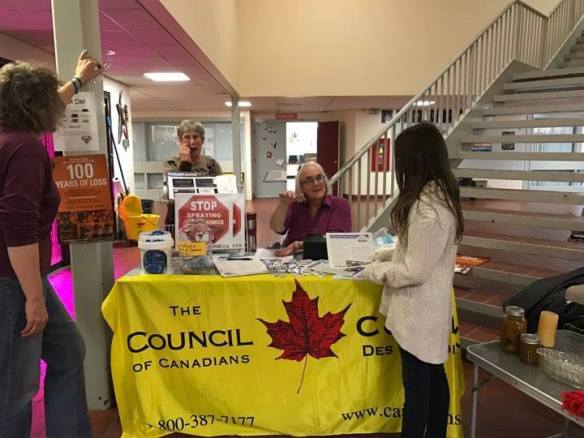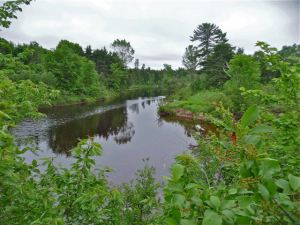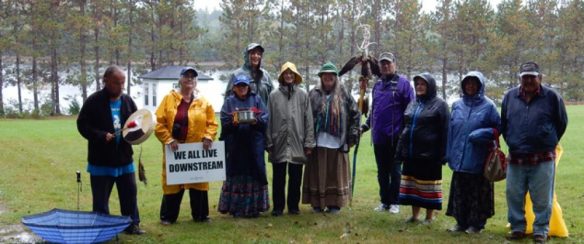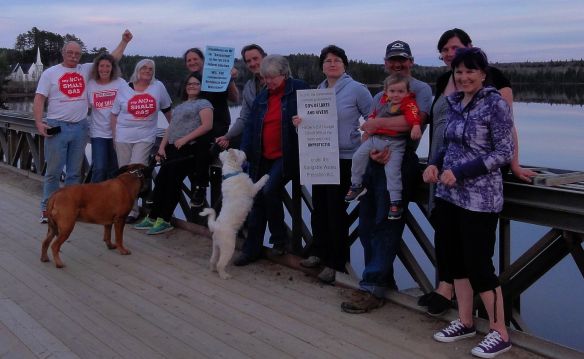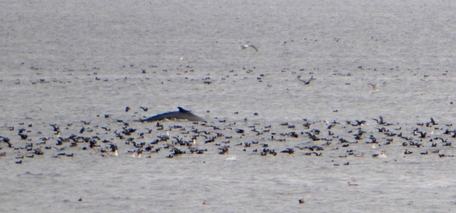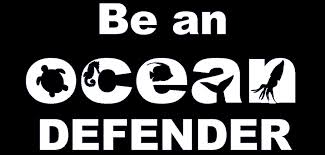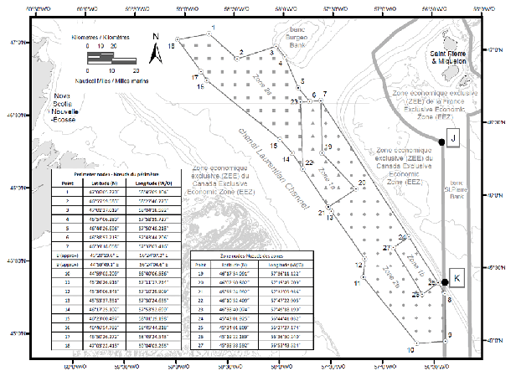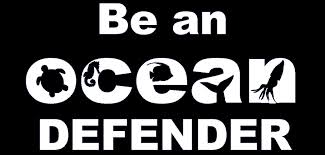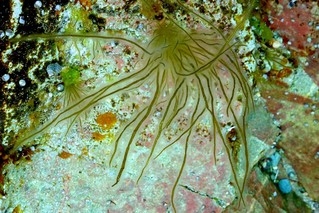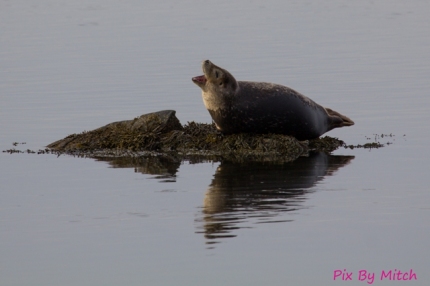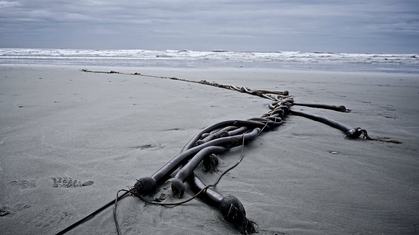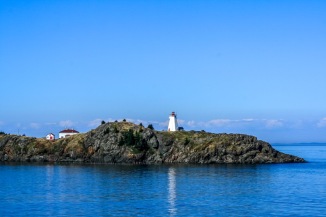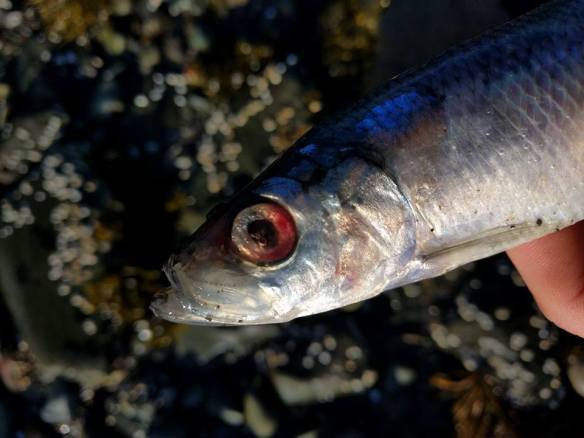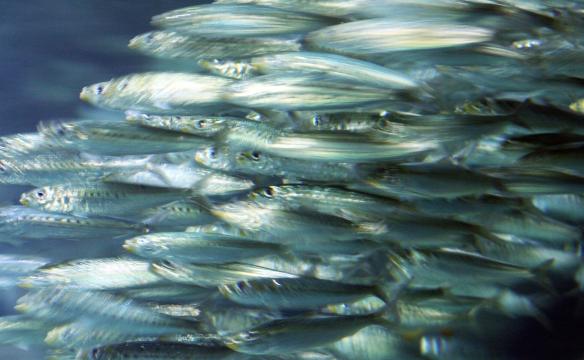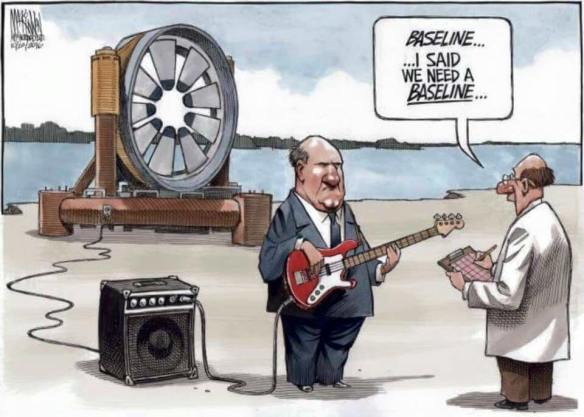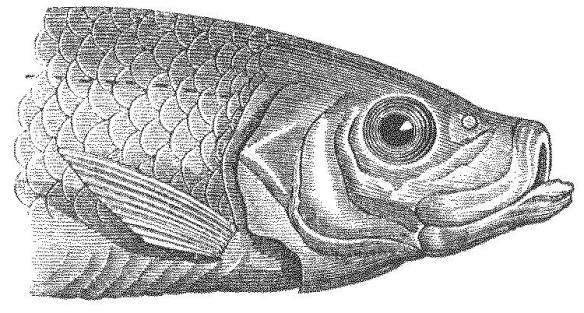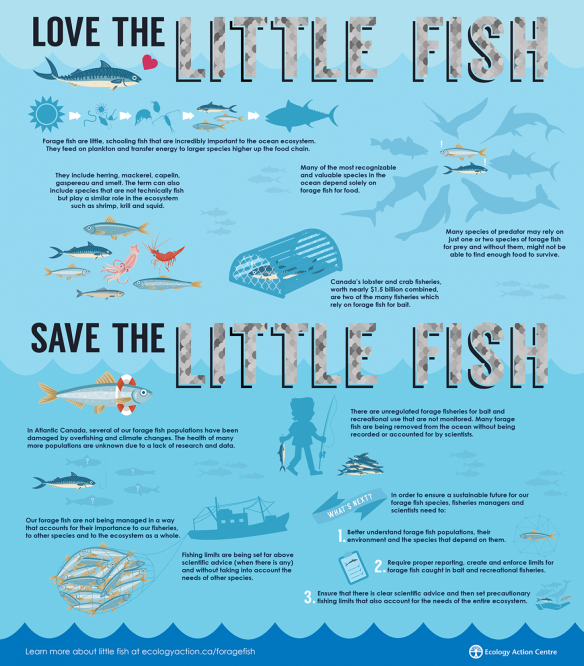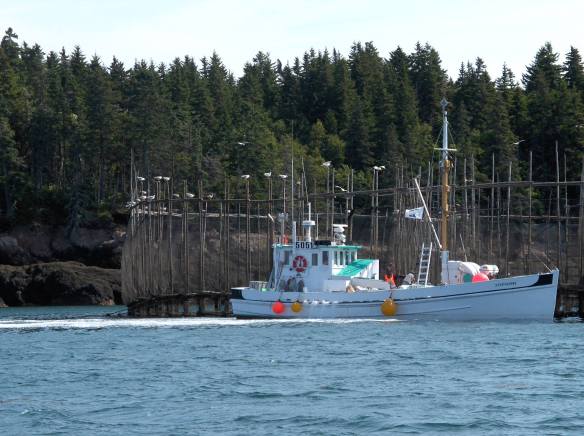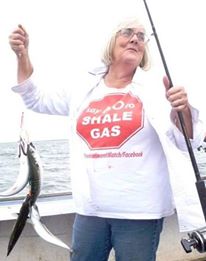
Comments on:
- Environmental Assessment & Regulatory Review Discussion Document
(released by Environment & Climate Change Canada to public June 29, 2017)
- Part 2: Let’s Talk Fish Habitat (released by Fisheries and Oceans Canada to
public July 24, 2017)
- Update on Navigation Protection Act Review (Transport Canada sent public
notification of these four discussion papers August 16, 2017)
- National Energy Board Modernization Review (we are not aware if Natural
Resources Canada has released an update on its Expert Panel report of May 15,
2017, which we have also reviewed)
Addressed to:
- The Honourable Marc Garneau, Minister of Transport — mintc@tc.gc.ca
- The Honourable Dominic LeBlanc, Minister of Oceans and Fisheries Canada —
min@dfo-mpo.gc.ca
- The Honourable Catherine McKenna, Minister of Environment and Climate
Change ec.ministre-minister.ec@canada.ca
- The Honourable Jim Carr, Minister of Natural Resources Canada —
minister@nrcan-rncan.gc.ca
1. Introduction
I write on behalf of Kent County NB chapter of the Council of Canadians. People in our chapter, and in our approximately 70 sister Council of Canadians chapters across the country, work in our local communities on:
- advocating for climate protection policies;
- raising awareness that climate issues are anthropogenic so humans must change;
- a large number of environmental issues to do with the oil and gas industry;
- protecting the health of our watersheds, our forested areas, and the wellbeing and habitats of marine animals;
- and much more.
We are also engaged in national Council of Canadians work around our major
campaigns, including:
- protection of fresh water;
- increasing government democracy, accountability, and transparency; and,
- promotion of environmental protections in international trade agreements as well as domestic decision-making.
From the above description, it is evident why we have an avid interest in federal
government environmental protection policy, programmes, and legislation.
For a volunteer group like ours, it has been a marathon to prepare for writing this –
especially during the summer. We are all volunteers and this is a complicated matter. As
grassroots people living in rural and low-income communities, we are very motivated.
This slideshow requires JavaScript.
We are certain to be most affected by gaps and mistakes in environmental approval
processes. We did a lot of reading and reviewing including:
- community and Indigenous submissions, panel recommendations and government
responses to recent consultations about The Fisheries Act and The Navigation
Protection Act (including materials released as recently as August 16 th , which also
have the consultation submission deadline of August 28th);
- the “Forward, Together” report by the NEB Modernization Review Panel (NEB
Panel) and the “Building Common Ground” report by the Multi-Interest Advisory
Committee on Environmental Assessment (MIAC), and,
- what was learned when two Council of Canadians representatives engaged in
consultations regarding Canada’s Oceans policies, arising from Canada’s
participation in the United Nations’ June 2017 Oceans Conference.
Then we read your government’s Environmental and Regulatory Reviews
Discussion Paper (ERRDP). We find significant holes in the ERRDP argument,
rationale and design.
2. Rebuilding Trust: Review Process Issues
Your government made a pre-election promise to strengthen the federal government’s
environmental protection mechanisms, working in an open and transparent manner… At the very top of the ERRDP document, you emphasize the need to rebuild trust with
Canadians. Like us, most Canadians think and feel that getting better environmental
protection regulations and processes enshrined in federal law is very important. This is
certainly one of the reasons your government was elected with a majority in 2015.
Those of us who participated in the panel review consultations can see that the two
excellent reports – from the NEB Panel and the MIAC Panel – have made superior
recommendations to those contained in the ERRDP, even though we do not agree in
entirety with these two Panels. On the other hand, we see that the vision outlined in the
ERRDP is attractive but it lacks solidity. Omissions can give the impression that not all is
not as it appears, or that excellent ideas could have been perhaps intentionally dropped at the political level. We notice measures that would help the environment are not in there. These are elaborated more in Sections 3 and 4.
We are troubled that, in the past month, further “discussion” materials have been published by your government asking for public input on changes to the Navigation Protection Act (NPA) and the Fisheries Act (FA). The most recent was on August 16 th and the deadline for comments is August 28 th as per the ERRDP.
Your engagement planning for this entire review process has been challenging. The NPA,
the FA, and the NEB Act all feed into the federal Environment Assessment (or Impact
Assessment) process. This relationship is legislated. Each of these acts (and more, some
of which are also in flux) can trigger a federal assessment of environmental impacts.
Copious amounts of overlapping information were published online, but because it was
presented in a dis-synchronous manner it has been very hard to track the details.
Discussions on proposals for all the “feeder acts” really should have been consecutive not
concurrent. Our group made this recommendation in a submission to your government last Fall. If community organizations and other interested parties had a valid sense of where your government was going with changes to all the “feeder acts,” we would be better prepared to comment on your visionary report about proposed environmental or impact processes.
A contributing factor is that each federal department has undertaken the various
consultation processes within its own silo of departmental mandate apparently without full consideration of where the others were headed. In sum, consultations would have been more productive – and more democratic, accountable, and transparent – if the legislated flow of authority had been respected in the review process.
To add to our stress, the current “last stage” review and consultation is being done now in the summer, when pretty much everyone in Canada wants to have some down time as our summers are short. We understand about the urgency of revising this legislation.
Concerned community organizations such as ours have been treading water furiously to
try to stay on top of the overlapping processes, read all the materials, and get
submissions, comments or presentations in on time.
We have not seen much federal call-out or promotion for engagement in responding to the ERRDP. That fact, combined with the many challenges mentioned above lead us to recommend you extend the deadline for comments, and after Labour Day re-
advertise widely an extension of time for community response, with a minimum of
six weeks for the new deadline. Please take time to really listen to (or hear) and act on
what we and other commentators are saying. To make this process meaningful and helpful for coming generations, the holders of local knowledges and experiences must be
welcomed into the decision-making fold. The NEB Panel report makes this point
repeatedly when talking about both general stakeholder and also Indigenous community
relations.
3. The Devil is in the Details
It is impossible to enforce anything if the standards are vague. The NEB Panel report
provides many details on how to move forward. It calls for specificity in regulations: set out what is allowed and what is not. “The review proposal is a comprehensive work and
government should not take a piecemeal approach to implementation” reminds the NEB
Panel.
In our local chapter work we are dealing with “details” all the time. A member of one of our chapters attended the MIAC Panel’s public consultation session in Fredericton NB. She said the panel committee was attentive, and she felt public opinions and comments had been heard. After reading their Common Ground (CG) report, she commented, “It is not perfect, but it looks good. Still, the devil is in the details.” After reading the ERRDP report, we can see that many of the MIAC Panel’s recommendations have been diminished.
3.a Points in the ERRDP:
In no instance should the proponent be in charge of any aspect of the environmental assessment or compliance processes:
▪ in the initial stage: consultation processes led by industry; industry must be
present and partnered but it is government’s job to do consultation
▪ during scientific study and reviews: (1) no preparation of Impact or
Environmental Assessment reports and analyses by consultants hired by the
proponent; (2) consideration could be given to establishing a list of approved
“independent, third party” consultants from which proponents could select; to be transparent, and trustworthy, this must be done through a public RFP call, perhaps with assistance from the Auditor General, and where that criteria and decision-making is developed and finalized through public input and open to ongoing public scrutiny
▪ after development: no self-regulation/monitoring by industry (proponent) – it
is in the public interest to have government inspect and enforce compliance
3.b General points re: rebuilding federal environmental policies and regulations:
▪ During the 10 years of the Harper Conservative government, we lost science data, scientists, regulations, policies, funding, departmental branches and systems, and personnel. We do not find a thoughtful funding design to replace this capacity. Could the Auditor General be asked to assist with making proposals for this, on an urgent basis?
▪ During the 10 years of the Harper Conservative government, we did not only lose technical and regulatory capacity, we also lost our reputation as a nation. We want the final legislation you produce to show the global community we are a nation that practices and promotes democracy, human rights, government account-ability and transparency, and genuine environmental stewardship.
3.c Points regarding the NEB review report and NEB Act, as they feed into the
Environmental Assessment/Impact implementation process:
▪ Your government is aware that we are deeply concerned about the December 16, 2013 MOU that gave the NEB authority to judge environmental impacts of fisheries within projects they are reviewing (see #1 below). We have repeatedly asked about this in com-munications to Minister LeBlanc and Prime Minister Trudeau, although no response has yet been received. We expect that this and all other similar MOUs, policies, and informal agreements will be rescinded immediately.
▪ We support creation of a Ombudsman of Landowners, as suggested in
the NEB Panel report.
▪ It is noteworthy and encouraging that – just this week – the NEB announced it will consider upstream and downstream GHG emissions during the renewed review of the Energy East Pipeline (EE). Thus, in essence, the NEB will be evaluating EE with respect to a range of national interests or priorities, which is the first step identified in the ERRDP “IA” process diagram. In the absence of these new regulations and policies, which are still being discussed, it is great news to learn that climate change and environmental hazards will be front and centre – along with economic and energy issues – as NEB evaluates EE. However, there has been a “pro” and “con” debate about this recent decision.
It is vitally important that the determinants of the “National Interest” are discussed in a transparent and inclusive process. To ensure rebuilding public trust, the consultation defining the “national interest” must be really broad and in-depth on both items and ranking. As diverse parties and commun-ities bring a broad range of perspectives to the table to develop a truly common agenda on where we all want Canada to go, this should break down some of the silo-ism that exists both between and in departments and non-government sectors. The ERRDP does not identify establishing this consultation process or structure. Fulsome consultation will be essential for realizing goals of inclusiveness, accountability, transparency, and bringing science back into the middle of everything. Similar structural accommoda-tion is needed for bringing traditional Indigenous knowledge-holders to the table before proposals gain development momentum.
▪ How will provinces’ “environmental” or “impact” assessment processes be brought into synchronization with the new federal system? This is a huge and central issue that must be addressed. The ERRDP vision is only concerned with proposals that fall under federal mandate. A double “duty” or “jeopardy” situation will continue to impact proposals that have aspects requiring both federal and provincial oversight. It is not a level playing field: proponents generally have adequate funding and are motivated by increasing their profits, while environ-mentalists, Indigenous Peoples, and communities often do this work as volunteers for the common good. Yet, both will continue to be caught in this trap, and only one side potentially has the resources to go the full length of both processes. The new federal legislation must address this situation, so that communities and individuals with limited resources know where to focus their energy. This makes sense because federal decisions are about the “good” of the entire nation.
3.d Points regarding the Navigation Protection Act
▪ You have received extensive input on the need for bringing back protection to to help the creatures that live in, on and around our Navigable Waters. Contrary
to this, the NPA review panel has recommended not restoring the “Schedule” to pre-Harper standards. Their proposal of having a review process to add lakes and rivers to the Schedule is very minimalist and “high level”: none of the structural details are provided. We are being asked to trust that you will do this properly, but frankly many of us we are still in an era of mistrust. In addition to whatever is ultimately done about this part of your proposal, we are asking for the reinstatement of all lakes and rivers formerly protected through the Navigable Waters Protection Act’s “Schedule.”
▪ In general shipping is little considered in environmental impact assessments: it seems to be regarded as a “given” that the right to navigate waters takes primacy over virtually anything else. Recently Minister LeBlanc made an exceptional appeal to shipping tanker/transport companies to slow down in the areas of the St. Lawrence where several dead Right Whales have been found this year. Now a $25,000 fine has been instituted for those shipping through these waters who fail to slow down, but the fines must be much stiffer to change the conduct of these companies. For all vulnerable habitat or migration waters, protection from shipping-tanker kills must be in the NPA in clear language and very specific terms. As has been done in this emergency situation regarding the Right Whales, capacity needs to be on deck in full force too. This will require funding.
3.e Points regarding the Fisheries Act
▪ In your current material about changes to the Fisheries Act, you comment that the multiplicity of stressors facing marine life fall into a variety of jurisdictions and that they can be tackled through collaboration. Yet we see no plan for how that collabor-ation will take place. The crises enveloping marine life are increasingly severe. A major factor in this crisis is that no one entity is “in charge” – accountable – for the full range of protection, regulation and enforcement measures that are required.
One significant example is the hazards posed to indigenous or wild sea creatures when aquaculture goes wrong, which it frequently does. This past week, just off of Vancouver Island, tens of thousands of farmed Atlantic Salmon accidentally got loose and are now running with the endangered wild or indigenous Pacific Salmon. As well, this week a video was released showing many sick and/or deformed aqua-culture salmon in west coast fish farms. Obviously, some international accords must be signed to address these matters. But, first we need the proper protections –including genuinely appropriate design of a project, regulations of operation, and enforcement of standards – in our own country. As things stand presently, no collaborative or single authority has the powers to stop a process that will result in further disaster to wild/indigenous fish from aquaculture populations.
We hasten to add that this is just one of many, many such examples where our marine life protection policies are inadequate. The point we are making is we need one authority looking out to protect all sea life for future generations, using the best science and all other possible tools, as well as stakeholder round tables to gather expertise, share rationales, and secure commitments. That means breaking down silos in mandate and jurisdiction, and working together for the common good.
▪ Because of the undermining and undervaluing of capacity that DFO Science,
Conservation, and enforcement programmes have experienced in recent decades, a situation emerged where millions of herring beached and died in the Bay of Fundy this past winter and DFO response was meagre, slow, and ultimately inconclusive except to say the event was now finished. Even more ecently there was a report from scientists at Simon Fraser University that found that DFO’s failure to monitor as much as half of all wild salmon populations on the west coast is contributing to the imminent demise of that fishery. Indigenous communities on the west coast are distraught by this deepening crisis and their grassroots members and leaders are beginning to take matters into their hands. Funding, personnel and libraries must be restored and renewed to address worsening conditions for marine life.
▪ For fresh water we need the complete revival of and funding for the Experimental Lakes science development program: this means restoring federal funding to needed levels so that collaboration will flow between governmental and scientific/ngo communities.
▪ Put the definition of HADD (“the harmful alteration, disruption or
destruction of fish habitat”) back into the Fisheries Act, and add policies, funding, and personnel to assist with rebuilding degraded and damaged habitats.
▪ “Cumulative effects” on a species or habitat must be included in all
environmental assessments.
3.f Points regarding the Oceans Act
▪ We ask that you consider how the ERRDP proposal can be augmented to
break down federal department silos and actually protect our environment
from even our own government’s initiatives. Without living and vibrant
oceans our planet is not viable. Between the Oceans Act, the NPA Act,
and the Fisheries Act, it is possible to weave a web of protection. It is
imperative we start today.
▪ A critique of the Laurentian Channel Marine Protected Area (LCMPA) was submitted by Kent County COC Chapter in July, 2017 (see #2 below). As with many of our communications on marine and coastal issues, we have never received a response to this. We are also aware that you received communications regarding the LCMPA from Dr. Rodolphe Devillers from Memorial University in Newfoundland (dated July 18, 2017), and others. One example of the issues raised by us and others is that the LCMPA proposal allows oil and gas activity in what amounts to 98% of the so-called “protected area.” This lapse in judgement suggests that your government still has a lot of work to do enforcing environmental impact logic and standards on its own departments. Protection of Marine Areas must be done according to established international standards, for which the science is available. Anything less is just window dressing and a betrayal of future generations.
3.g Additional points raised by ERRDP and other reviews:
▪ Both the NEB panel and the Common Ground report address the need to respect the UN Declaration on the Rights of Indigenous Peoples (UNDRIP). They also both speak to the necessity of culturally respectful processes to facilitate inclusion of Traditional Indigenous Knowledge (TIK) throughout all review processes up to and including the actual Impact and/or Environmental Assessments. However, UNDRIP is not mentioned once in the ERRDP.
This is a very serious concern for us. UNDRIP sets the standard for what must be in all environmental reviews in Canada. Further, the ERRDP only poses – but does not address – the question of assuring cultural competence and inclusion when integrating TIK in federal environmental protection processes. We want to know your specific plan: the who, when, how, where, why, etc., for this crucial element of the entire proposal.
▪ The Precautionary Principle was advocated for all instances of uncertainty in the Common Ground report and this theme was taken up in the ERRDP. Our question is: what is the threshold for elevating the Precautionary Principle to centre stage in a proposal discussion, or a review process? How will this button get pushed? With so much our natural environment in a precarious situation, we need to make sure that the regulatory pathway to enacting the Precautionary Principle is transparent and accessible to all.
Canadian case law upholds the overarching trustee responsibility of government to err on the side of caution when legitimate “flags are raised” about dangers to human health. Despite this, at the current time, federal agencies are unable – for example – to ensure that aquaculture industries do not allow diseases, medicines, or modified fish to escape into indigenous (wild) fisheries populations, yet western and indigenous science voices are very concerned about these issues.
Similarly, not so long ago, unconventional hydraulic fracking was considered safe, and people who spoke about possible risks faced stiff opposition from governments who wanted to allow fracking industries in their regions. Now science agrees with many of the concerns that were raised by citizens before peer-review science confirmed what local people were seeing.
This are just two small examples of the gaps that highlight the need for clarity on how to arrive at a decision to rely on the Precautionary Principle. The Principle offers a meaningful interim solution to emerging environmental concerns. We need to see the details about how the Precautionary Principle can be enacted by public call, to feel confident that it will indeed be relied on appropriately.
4. Our New Proposals to You
Ongoing pathways for dialogue and information sharing are of greatest importance to
protecting bioregions and using deep ecological analysis. These paths must be enshrined
in legislation, supporting regional citizen scientists and traditional knowledge-holders to
share expertise with frontline government personnel. The NEB panel report includes a
proposal along these lines:
“Our recommendations call for Regional Multi-Stakeholder Committees designed to
improve emergency preparedness and make standards more rigorous, enhanced
monitoring, and more robust analysis of risks to set priorities and drive continuous
improvement. The synergy achieved through these Committees will also provide
deep insight as to the scope of regional interests for any future project reviews.” (pg
5, in “Executive Summary” of NEB report).
However, this is not reflected in the ERRDP.
Our proposal is that your government implement this “regional multi-stakeholder
approach” by creating regional Environmental Protection Networking Committees
that would advise EACC, NRC, DFO, TC, etc.. They would meet face-to-face on an
appointed schedule to exchange information. They would also meet on an “as needs” basis, when urgent issues arise.
- The community members could be respected individuals nominated through a
public process, and representatives appointed by relevant organizations. Travel and meeting costs will paid by the government. The information and networking
facilitated by these bodies will more than justify the costs.
- Under the wing of EACC, all relevant federal departments could nominate a gate-
keeper liaison staff person to sit on each Regional Committees. Opening these
communication paths would be a huge step forward. This proposal would address a
lot of problems that local communities like ours have, when trying to bring local
environmental issues to the attention of federal departments.
- We have previously noted that panel reports contain worthy and important
specifications on inclusion of and working with Indigenous communities and elders. Our proposal is an inclusive one, advocating that Indigenous represen-tatives must also be part of these regional advisory bodies. However, nothing mentioned here is intended to replace Canada’s UNDRIP responsibilities to
consult BEFORE doing anything at all, or allowing anything at all. We just think
everything will work better if we are all at the same table during operational
discussions.
- Importantly, local “citizen scientist” networks (through community associations,
independent businesses, post-secondary institutions, non-governmental
organizations, etc.) would be connected to our proposed Environmental Protection
Networking Committees. The need for this became evident during the recent marine animal die-off crises in the Bay of Fundy. In previous decades, there were strong links between government conservation/enforcement staff and concerned
community members. After various departmental restructurings in the latter 1900’s, this relationship diminished as bureaucracy grew. The remnants of this voluntary collaboration were killed by the previous government, who wanted no intruders to disturb their pro-industry agenda. The regional networking committees can be a conduit through which urgent connection between citizen scientists and personnel in federal frontline environmental protection departments is facilitated, as well as for preliminary discussion on proposals, etc.
On a different topic, we recommend that the criminal code be amended to provide
stiff consequences for industries who violate environmental regulations by, for
example: releasing deleterious substances into the land, air or water; damage to habitat of protected animals or plants; traveling too fast or carelessly through habitat or migration areas; or, otherwise doing substantial, irreversible, or irremediable damage to the environment.
Our greatest concern, overall is that democracy, accountability and transparency be the modus operandi of all government departments, branches and personnel who have responsibility for ensuring protection of our threatened and struggling natural environment. That is how you will rebuild trust as well as allow your greatest allies, us – the grassroots people – to assist in protecting what is left for future generations. Therefore, information must be made available to people in affected areas NOT ONLY through digital transmission such as social media, websites, email, etc.
Many rural and many lower-income people in Canada do not use computers as conveniently as most urban and highly-schooled Canadians. Yet, it is invariably the
poorer and more rural people who are living in what some term as proposed “sacrifice
zones,” where proponents or governments seek to do major resource extraction developments. In other words these populations are “the most directly affected.”
Communications to the public must be published in print media, via flyer at local government offices, and through all other available person-to-person means, including seeking networking/outreach assistance with local environment, community, ngo, and Indigenous communities and groups.
This takes us back to our proposal for the Regional Multi-Stakeholder Committees. Provided with the flyers and information, the members of these committees can become
funnels for outgoing material, as well as incoming opinions and emergency response
collaborative organizing.
Notwithstanding any overlap with points made above, and in solidarity, we endorse the call made by West Coast Environmental Law for a “next-generation environmental assessment law for Canada that: works to achieve sustainability for both the environment and human well-being; assesses the cumulative impacts of development projects in a region; advances reconciliation and co-governance with Indigenous peoples; ensures more projects get assessed; aligns with Paris Agreement climate commitments; is transparent, accountable and includes meaningful public participation, including language rights.”
Submitted by:
Ann Pohl, Kent County NB Chapter, Council of Canadians
coc.kent.county.nb@gmail.com
506-785-2998 (home) / 506-521-0465 (cell)
- see: www.neb-one.gc.ca/bts/ctrg/mmrndm/ 2013fshrcnscnd-eng.html
- see: https://kentcountynbenvironmentwatch.wordpress.com/2017/07/11/
proposedlcmpaissues/
